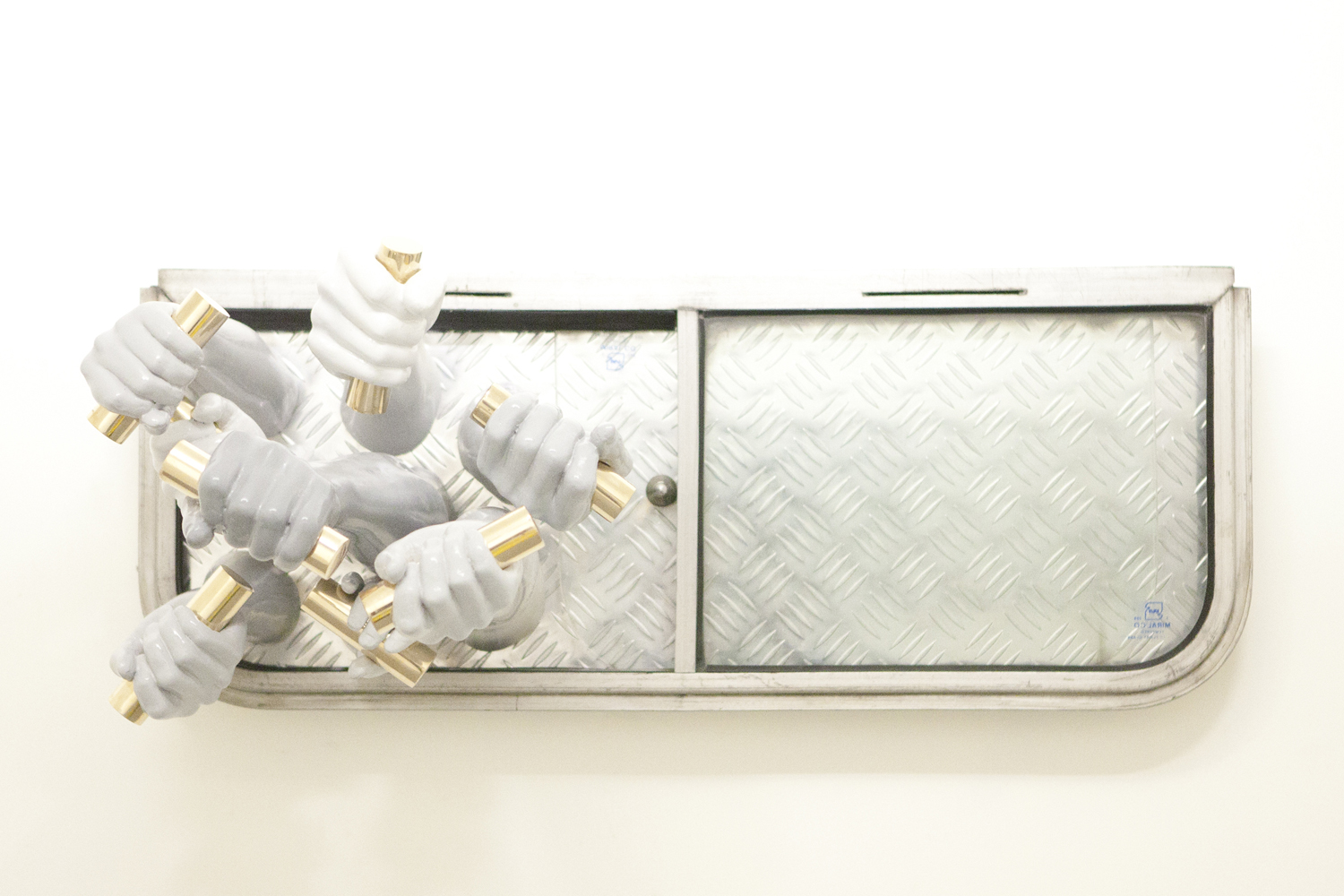Alireza Ma’soumi presented his new sculpture-installation collection at E’temad Gallery entitled “Azadi Station”. The quality of non-radical criticism, yet philosophical and rational inclinations among ethnographic characteristics at Ma’soumi’s works help cogitate on structural beliefs and old social models. Plurality and repetition in this collection represent public and underlying culture and beliefs, hence the harmony between the style and content of works, as we will witness, clearly highlights the importance of this collection among avant-garde and exciting – and in most of the cases the superficial – works of art these days.
When the logic of repetition in minimalism stepped into the realm of the Conceptual Art, it symbolized the structural, rational, indifferent and non-excited system of thinking. The function of this logic was not radical social criticism but assessing the mechanism of structures which form the contemporary life, thought, and language. In his recent collection, Ma’soumi has shown numerous and repetitious hands which are stuck out of earth, the ceiling and the walls; they are stretched out, deformed and hanging on the golden bar of the bus which gives them a ride to the “Azadi Station.” The idea of grabbing, wrestling, and leaning in this collection are reminiscent of the Oriental perception of the old model of “pinning hope on the others,” the wide open eyes which are taken away from the earth and individual human beings and are gazing skywards after a period of drought on the land; now they are looking for Azadi (freedom) in a vehicle whose controllable or otherwise wayward qualities determine whether they will get to the destination or not. This ironic point is quite obvious in the bars which act as the support and reliance. They are cut down and, therefore, have lost their function as a savior; yet despite this the hands are stretched out to get something which is not supported by anything. It tells the story of a society which stretches its hands to grab this useless object and each individual tries to take over from others to possess this and ask others what they already have.
In another corner, there is an old and rusty door of a bus on which it reads “Enghelab-Azadi” route. Taking advantage of symbolism through elements such as intercity transportation means as a hub of social gathering, plurality and socializing of people from different strata, or the presence of colors which represent the flag as another symbol of plurality culture have enriched these works with the pop art coding. Although, contrary to the mainstream trend in which the function of these elements were not social criticism or the praise but merely representing these daily elements, in this collection the elements of pop art show up from a critical perspective.
Though, works by Alireza Ma’soumi in “Azadi Station” adopts a symbolism approach, rather than employing familiar symbols such as a flag or equivocal names to drive at a political criticism, they have a sociological or ethnographic approach towards Oriental societies, including Iran. These societies are “human-based” and individual thinking is replaced by blind support for common beliefs, a way of thinking which looks for happiness somewhere out of itself and in the hands of the others, therefore its existence always depends on a vehicle to take it to the destination: a vehicle which is not always controllable.
Mahsa Farhadi Kia
February, 2012
